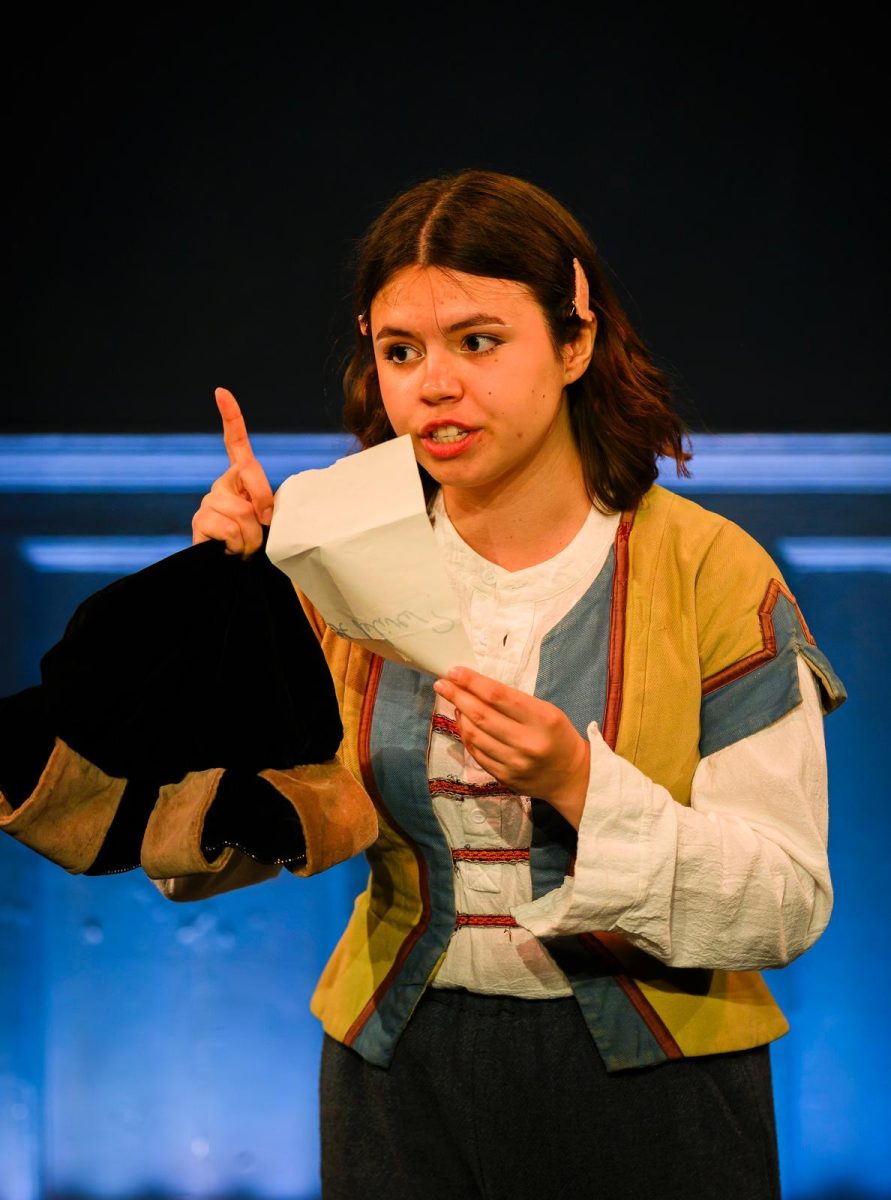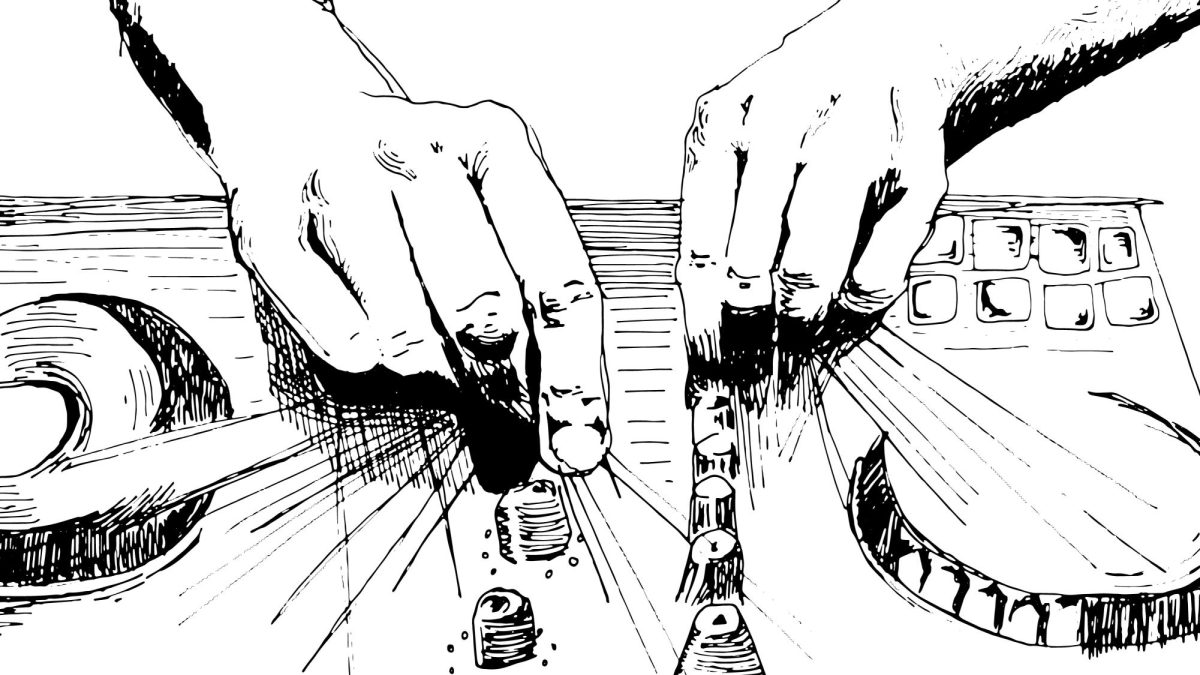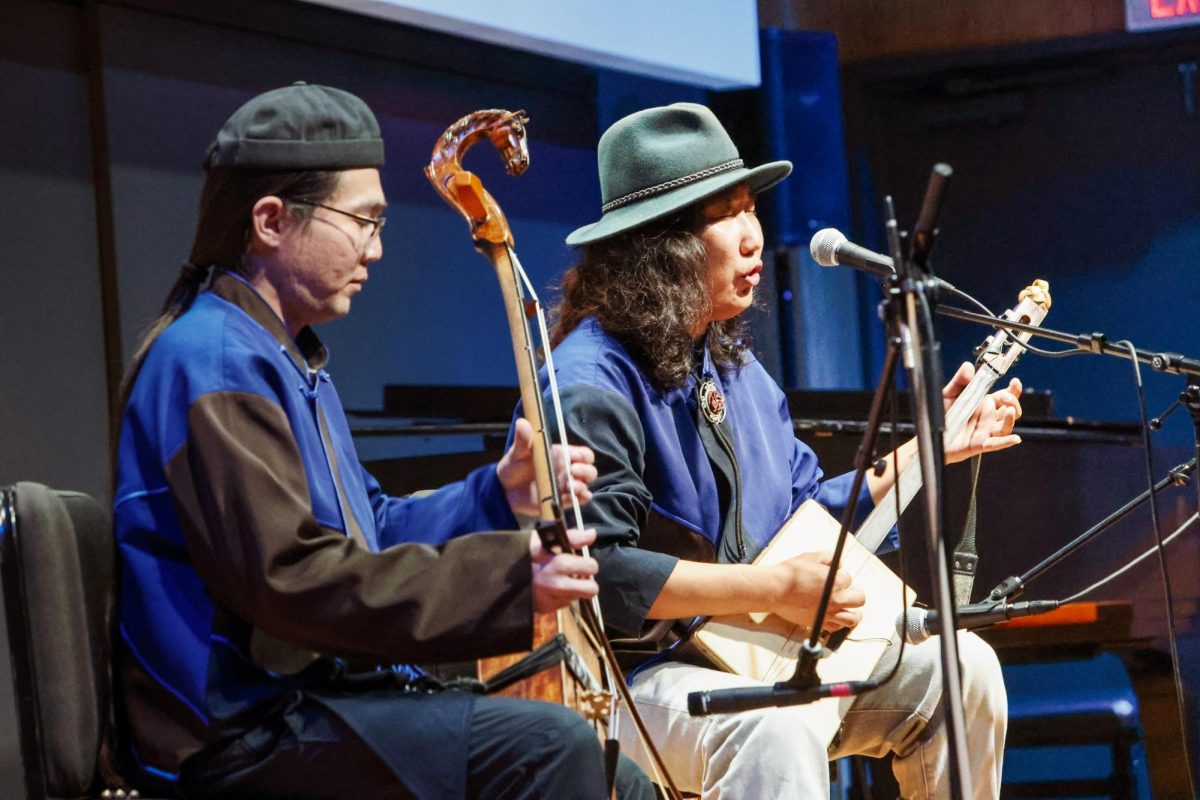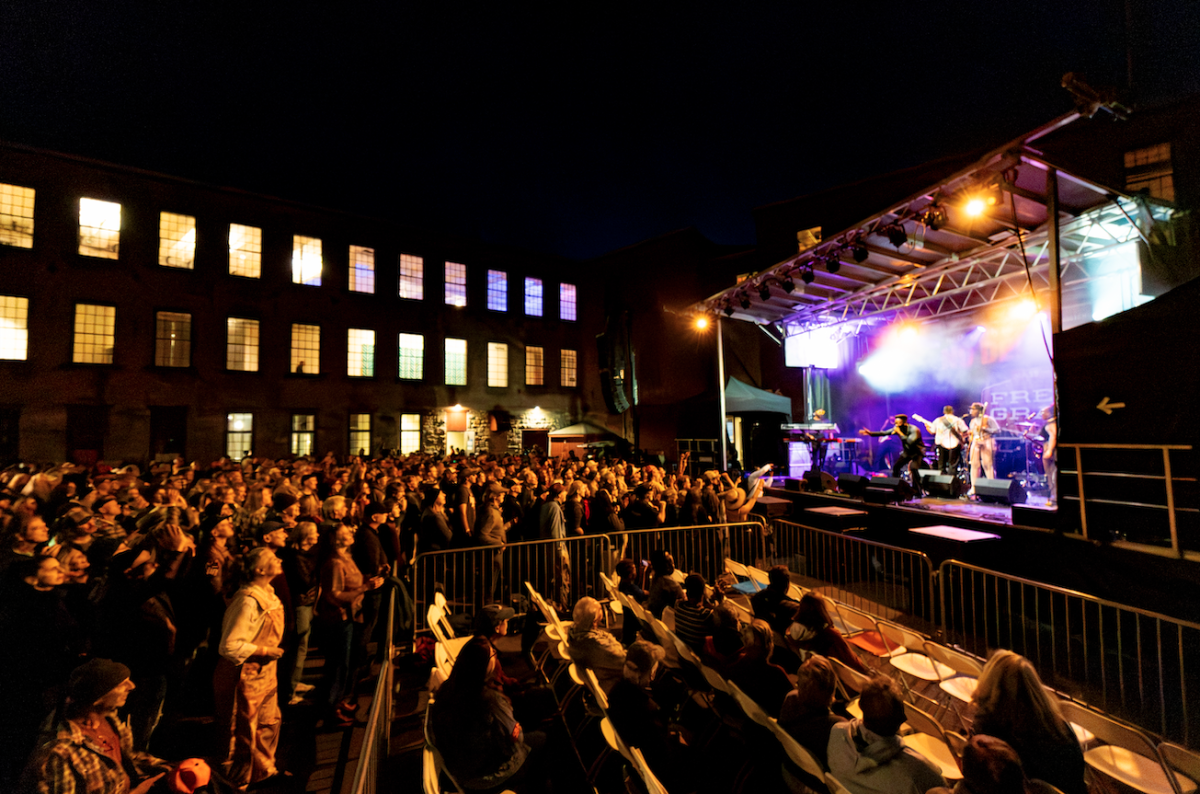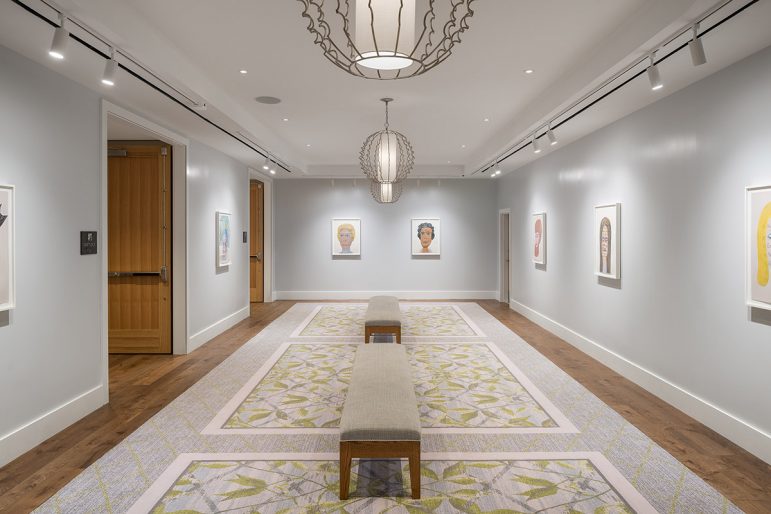
The gallery-like space outside the Williams Inn ballroom features Laylah Ali’s portraits “Nordic Types.” The Inn includes work by five professors.
“Hotel art” is somewhat of a dirty word in the art world. Works of art, historically, are chosen for hotels because of their lack of significance and inspiration, often failing to spark awe in hotel guests, much less in art critics and historians. The curation of the new Williams Inn, however, works to fight back against this notion of “hotel art,” exhibiting a collection of pieces by studio art faculty at the College.
Walking through the new Williams Inn on Sunday afternoon with Lisa Dorin, the deputy director for curatorial affairs at the Williams College Museum of Art (WCMA), passing a hallway adorned with paintings by Professor of Art Mike Glier ’75 or peering into the fitness center to look upon a series of drawings by Professor of Art Pallavi Sen, I found the new Williams Inn to be an ambitious and exciting showing of works by Williams College professors, one that rejects traditional gallery space.
“I think it was important to us that, if the Inn was going to feature art, it was going to feature art that was of this place, so that when people come here, they can get the sense that art is an important part of Williams and Williams’ history and legacy, so it felt right that the art reflects the community,” Dorin explained about the Inn project, which began last summer.
Dorin initiated the process by reaching out to permanent faculty members to start a dialogue about displaying their art in the Inn. “It started as a conversation about what it meant to be displaying art not in a gallery but in a public space and how their art might function in this space,” Dorin said about the initial conversations she had with artists in regards to showing their work in the Inn, “but they were all positive about it.” Professors Laylah Ali ’91, Amy Podmore, Barabra Takenaga, Glier and Sen all agreed to a long-term loan with the Inn to show their works.
Curating the works in the Inn provided a particular challenge for Dorin and the committee who advised on the design of the Inn, as well as for the artists, many of whom are used to showing work in a traditional gallery space. Dorin articulated the challenge of uncertainty in her work with the Inn: “We were having to decide what art was going where before the Inn was finished construction, so there were a lot of things we didn’t know. We had seen floor plans, but there were things we couldn’t know until we were in here, installing.”
While quirks of the space provided challenges, there were also fruitful opportunities for breaking down the relationship between museum patron and artist, as visitors to the Inn are encouraged to interact with the pieces in ways they might not otherwise, whether encountering them in a meeting space, hallways, the garden, or even the fitness center.
Encountering the pieces in the Inn, the time and attention given to the curation of the Inn is clear and often striking. A series of drawings by Sen titled “Summer Drawings Made While Listening to Audio Books (Harry Potter 1-5 + Neapolitan Novels 1-3)” cover what might otherwise be an imposing white wall in the Inn’s fitness center, interacting with the space in a mystifying and wonderful way, down to the metal frames that echo the steely grey of the fitness equipment. In the patio that faces out towards the wooded Berkshires, Podmore’s sculpture “Whiplash” both blends in with its surroundings and breaks up the line of the landscape with its bulbous form and protruding legs. The vestibule to the major meeting rooms of the Inn was designed to invoke a gallery, Dorin explained to me; however, the space is often used for meetings and weddings hosted by the Inn. This makes the showing of Ali’s series of portraits, “Nordic Types,” a fascinating choice for the space as one can imagine Ali’s portraits peering into a crowded room of party goers.
As the new Williams Inn ushers in a new era for visitors coming the Williamstown, the thoughtful inclusion of art by and from the community acts as an essential reminder of the thriving arts community that has, in part, made projects like the new Inn possible in Williamstown. When asked about the ways in which the curation of the Inn can work to incorporate this new space into the landscape of Williamstown, Dorin expressed, “I think of it as embedding the community into the hotel, so visitors from outside Williams can see what’s happening here.”




